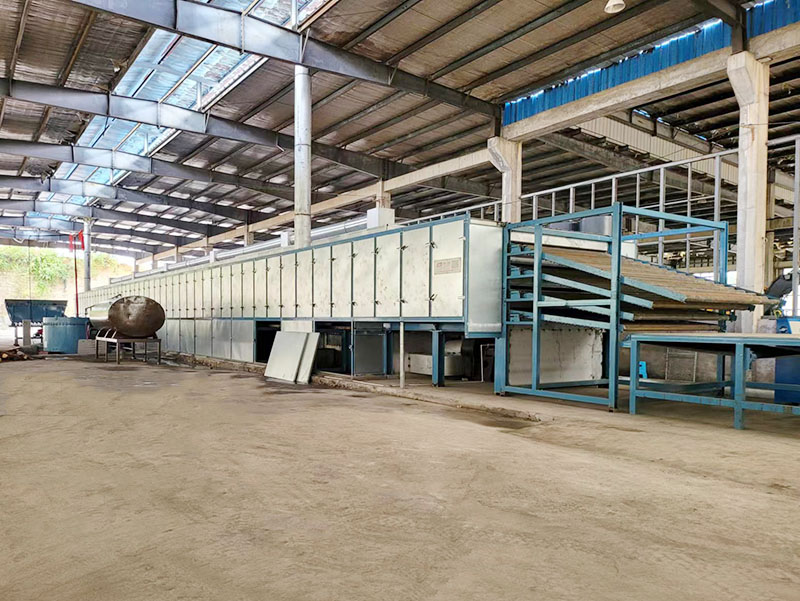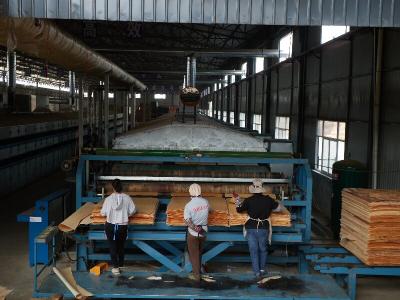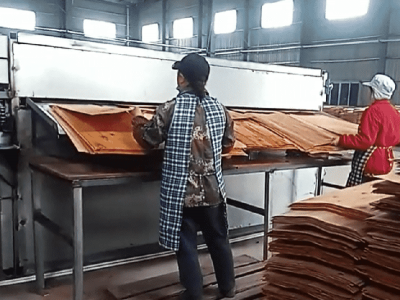How We Dry Veneer: Inside the Hot and Humid Journey
Drying veneer isn’t just a step—it’s the heart of the process. We’ve been in the veneer production game long enough to know that quality veneer starts with precision. And believe us, nothing kills veneer faster than the wrong drying process.
Let’s dive into what is the process of drying veneer, why it matters, and how to make sure every sheet is ready to be glued, every time.
Why Dry Veneer? The Truth Behind the Process
Let’s start with the basics. When wood is sliced into veneer, it holds a lot of moisture content. Wet wood is unstable, bends easily, and refuses glue. That's a nightmare in veneer production.
Here's why you need to dry veneer:
Remove excess water trapped in wood fibers
Prevent cracking and splitting later
Improve bonding with glue
Enhance veneer quality and lifespan
Wet veneer is unpredictable. It warps curls and just doesn’t behave. That’s where the drying magic begins.
The Veneer Drying Journey: Step by Step
So, what is the process of drying veneer exactly? Let’s break it down.
1. Stacking and Prepping
We start by stacking green veneer into trays. We align sheets evenly to let air pass freely. Gaps mean chaos later.
2. Measuring Moisture Content
We’re not guessing here. We use moisture meters to check the moisture content. Target? Around 8–12%. That’s the sweet spot for ready to be glued veneer.
3. Into the Heat
Time to fire up the veneer dryer. Now listen—this part is all about balance.
Too fast = cracks.
Too slow = mold.
Too hot = disaster.
We push hot air through the dryer, keeping it controlled, steady, and just humid enough.
4. Hot and Humid Air Matters
Yes, it’s hot in there. But it’s also humid. Strange combo? It works. Why? Because hot, dry air alone cooks the outside and leaves the inside wet. But hot and humid air gently pulls moisture out from the core.
That’s how you dry veneer without frying it.
Tools of the Trade: How We Do It
We don’t just rely on luck. Our equipment is designed for precision and speed.

Types of Dryers We Use:
Roller dryers
Mesh belt dryers
Jet dryers
Each veneer dryer comes with digital controls to monitor speed, air pressure, and humidity. It’s not rocket science—but it’s close.
Veneer Quality = Customer Satisfaction
This isn't just about drying wood. It’s about delivering something stable smooth and strong.
What Makes Quality Veneer?
Smooth surface
No cracks or splits
Even color
Proper moisture content
Ready for glue every time
When veneer doesn’t meet these marks, it ruins furniture flooring and doors. So we don’t let that happen.

Common Drying Problems (And How We Avoid Them)
Here’s the ugly side of drying. When things go wrong, they go really wrong.
Issues You Might Face:
Over-dried veneer: Too brittle
Under-dried veneer: Traps moisture
Case-hardening: Outer layer dries too fast
Discoloration: Uneven airflow
How We Fix Them:
Calibrate dryers daily
Regularly check airflow
Adjust belt speed by species
Monitor temp with smart sensors
We’re not perfect—but we’ve got systems to catch problems before they reach you.
What Happens After Drying?
Drying isn’t the end. We cool the veneer slowly to prevent stress. Then we stack and press it flat. After that? It’s ready to be glued, sanded, and shaped into its next life.
Final Steps:
Cooling
Moisture balancing
Stacking and pressing
Packing for transport
Why Choose Us for Your Veneer Drying?
We don’t just build dryers. We build relationships. We test every machine with real veneer and adjust it to your raw materials. Whether you run a small factory or a massive plant—we’ve got you.
Our Promise:
Energy-efficient dryers
Long machine lifespan
Reliable after-sales support
Custom solutions for every line
You don’t just get a machine. You get our full team behind it!





